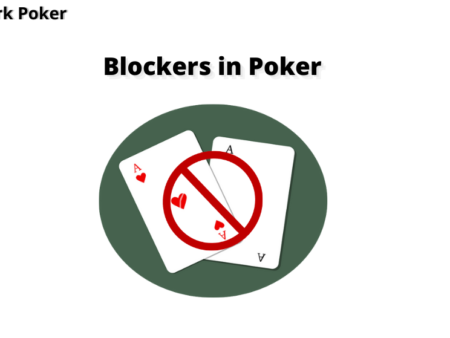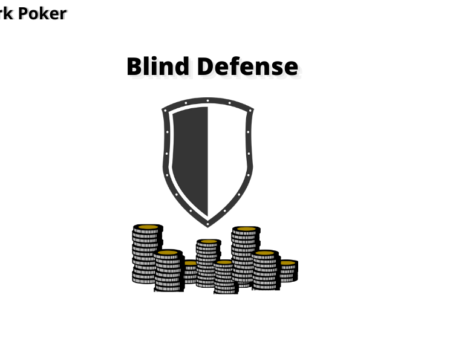

Blind stealing is a tricky preflop move that helps you to win uncontested blinds. It is usually attempted from late positions in a situation where everyone has folded before you. You raise in an attempt to force both the players in the big and small blinds to fold and steal their blinds.
Let’s look at the preflop action of a 6-max game to understand blind stealing in poker.
- UTG – Folds
- MP – Folds
- Cutoff – Folds
- Button – The player on the button has a chance to steal the big and small blinds.
He raises to 3X bb. - Small Blind: Folds
- Big Blind: Folds
Here, the player on the button has won the uncontested blinds with a raise, irrespective of his cards.
Note: The player in the small blind also has a chance to steal the big blind if everyone has folded before him. If he raises and the big blind folds, he will steal the big blind. Similarly, the cut-off also has a chance to steal the blinds if the button, small blind and big blind fold to his raise.
Why You Should Steal the Blinds?
You are going to pay 1.5 big blinds every 6 hands in 6-max games. So, if you play 100 hands and fold every hand, you will still lose 25 big blinds. That’s the cost to pay even if you don’t enter a single pot. Here’s the math:
1) When playing 6-max cash games, you will pay 1.5 big blinds (bb) every 6 hands, which is 1 Big Blind and 1 Small Blind combined. So, if the Small Blind is $5 and Big Blind is $10, you will pay $15 (1.5 bb) every 6 hands.
Cost of Playing Every 6 Hands = 1.5 bb
2) The cost of playing a single hand is 0.25 bb (1.5 bb/ 6 Hands = 0.25 bb).
Cost of Playing Each Hand = 0.25 bb
3) The cost of playing 100 hands is 25 bb (0.25 bb X 100 hands = 25 bb). So, if you fold every single hand on the preflop, you will eventually lose 25 bb after 100 hands.
Cost of Playing 100 Hands = 25 bb
When you steal the blinds, you can cover your blind cost up to a certain extent. Blind stealing will have your stack balanced even if you play very tight.
How Blind Stealing in Poker Works?
When you are in the late position and all the players before you have folded, you have three options:
1) Fold
If you are uninterested in the pot, you can fold.
2) Call
When you call and the small blind folds, you are giving the big blind a free pass to see the flop, irrespective of what hand he holds. If he is holding a weak hand, his hand still could become powerful after the flop. Also, your opponent will be entering with a wide range by checking.
3) Raise
As there are only two players (big and small blinds) to act after you, they can be holding any two cards. So, there is a small chance that they might not be holding a hand strong enough to call your raise. If they fold, you can steal the blinds right away. However, when you raise, there can be three outcomes:
- Your Opponent Folds: You steal the blinds
- Your Opponent Calls: You will have the best position post-flop
- Your Opponent Re-raises: You will have to assess your hand to see if you want to call
Whose Blinds Should You Steal?
The success of stealing blinds depends more on how likely your opponent is going to fold to your raise. So, you must know your opponents (the big and the small blind) well before attempting to steal. The ideal players whose blinds you should steal are as follows:
Tight Players: Tight players are easy targets as they usually fold to raises if they don’t have a hand strong enough to call. If you face a re-raise from a tight player, you should fold your weak or marginal hands as you will be up against a very strong range.
Straightforward Players: Players who play a very straightforward game like raising with only strong hands and folding weak hands are also good targets. As they will be the last players to act preflop, there is a small chance that they do not hold hands strong enough to call.
Whose Blinds You Should NOT Steal?
Be careful against players who are just the opposite of what was described above. Try not to steal with weak hands as you will be most likely called by them.
Loose Players: If your opponent is a loose-passive player (fish), your raise is most likely to be called. Raise with good hands that you can value bet post-flop. You will have the best position post-flop, and you can make better decisions based on their actions. If your opponent is loose-aggressive, you are most likely to face a re-raise. So, it is advised not to bluff and attempt to steal their blinds.
Tricky Players: Players who call your raise and often check-raise post-flop are the tricky ones that you should avoid stealing. These players know what you are trying to achieve and set up traps post-flop. Also, they often re-raise to catch your attempts of stealing.
Raise Sizing for Blind Stealing
As you are looking to steal 1.5 blinds on the preflop, you should ideally raise it to 2.5 to 3 times the big blind. Anything more than that would be an overbet and too big in comparison to the pot. If you face a re-raise, you can comfortably fold if you are attempting to bluff with weak hands. It is recommended to have consistent blind stealing raise size so that you don’t become predictable.
You can choose to increase the raise size if you hold a strong hand against a loose-passive player. If they fold, you win the blinds; and, if they call, you have a chance to value bet based on board texture post-flop.
Conclusion
Blind stealing is a profitable preflop move that helps you to win uncontested blinds. Know your opponent well before attempting to steal blinds in poker. It is always better to steal with marginal to strong hands than with weak hands. Have a balanced stealing frequency so that your opponents take your raise seriously. Practice stealing blinds at low-stakes tables first before trying it at mid-to-high stakes tables. Good luck and happy stealing blinds!
The next important lesson is how to defend your blinds. Click to learn: Blind Defense in Poker




